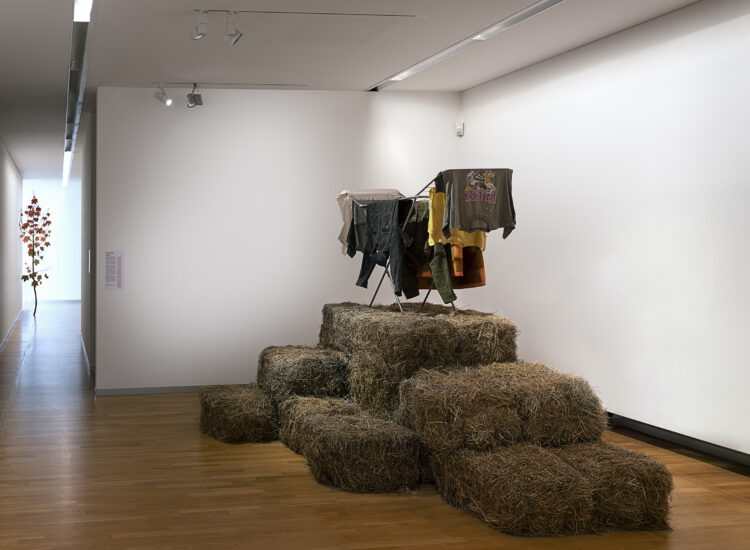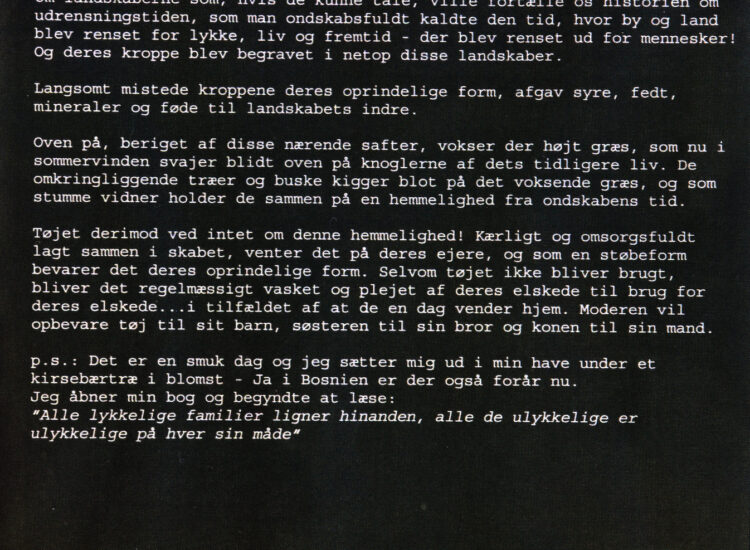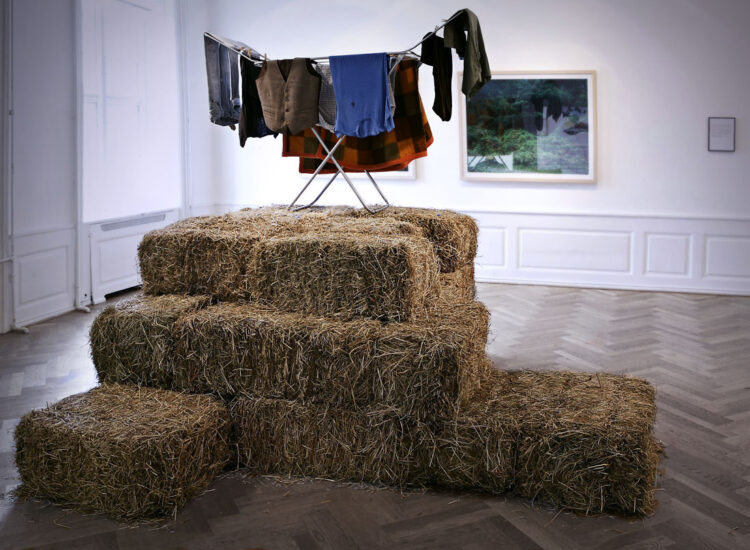Cleaning Times
Cleaning Times, 2006/2020, sculpture/installation: hay, clothes drying rack approximately, 200 cm x 200 cm x 240 cm.
Cleaning Times is a sculptural work consisting of clothes hanging on a folded up drying rack, placed on top of a pile of hay bales, giving an impression of laundry hung to air. However, the double meaning of the title of the artwork indicates a slightly different reality by referring to the ethnic cleansing during the war in Bosnia and Herzegovina. This dark reality manifests itself when introduced to the fact that the hay was mowed on the mass graves in northwest Bosnia and Herzegovina, and that the clothes belonged to people who were victims of these ethnic cleansings.
The hay bales from the incessantly growing grass is an artistic materialisation of nature’s cyclic processes that not even the brutality of war could stop. The grass continued to grow even when human lives were abruptly and brutally ended. As the artist points out: “The flora draws nourishment from the depths of the mass grave, it flourishes, starting thus a new cycle of life on its surface”. This focus on nature brings a somewhat poetic perspective on life that goes on despite the lethal man-made war conflicts. The clothes, as garment resembling the shape of the body, could be seen as a materialisation of absence and loss. As memory objects, the clothes elicit memories and evoke emotions, thus introducing a more human and personal dimension to the factual and legal analyses of the atrocities committed during the war.
Note should be made of the fact that the material used in Cleaning Time are readymade objects and not pre-designed by the artist. They are authentic – almost forensic – material, procured in collaboration with local people and the victims’ relatives. The senior curator Dorthe Rugaard describes Čirkinagić’ artistic take in the following way: “The physical materials he uses in his works are not meant to allude to anything and only second-handedly do they serve a number of allegorical or symbolic functions. In this way we are brought as closely to the crime scenes and the victims as possible. (…) And yet the items are not just presented as simple evidence. These tangible items are presented in an artistic way adding symbolic layers of meaning and thus give us an opportunity to reflect on the complex mechanisms of fascism – or on death and human existence – within a framework of understanding that reaches a lot farther than the artist’s personal experiences during the war.”


